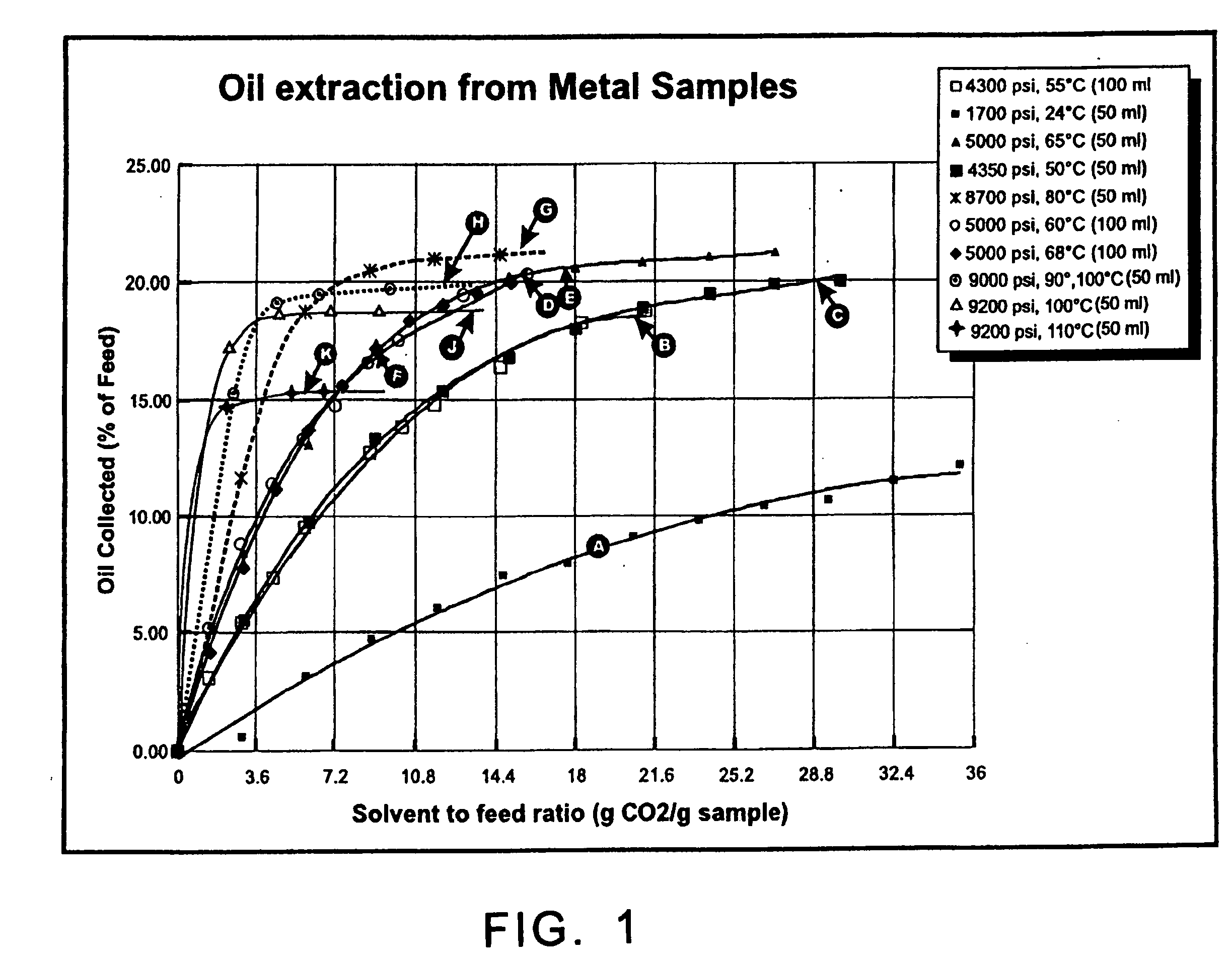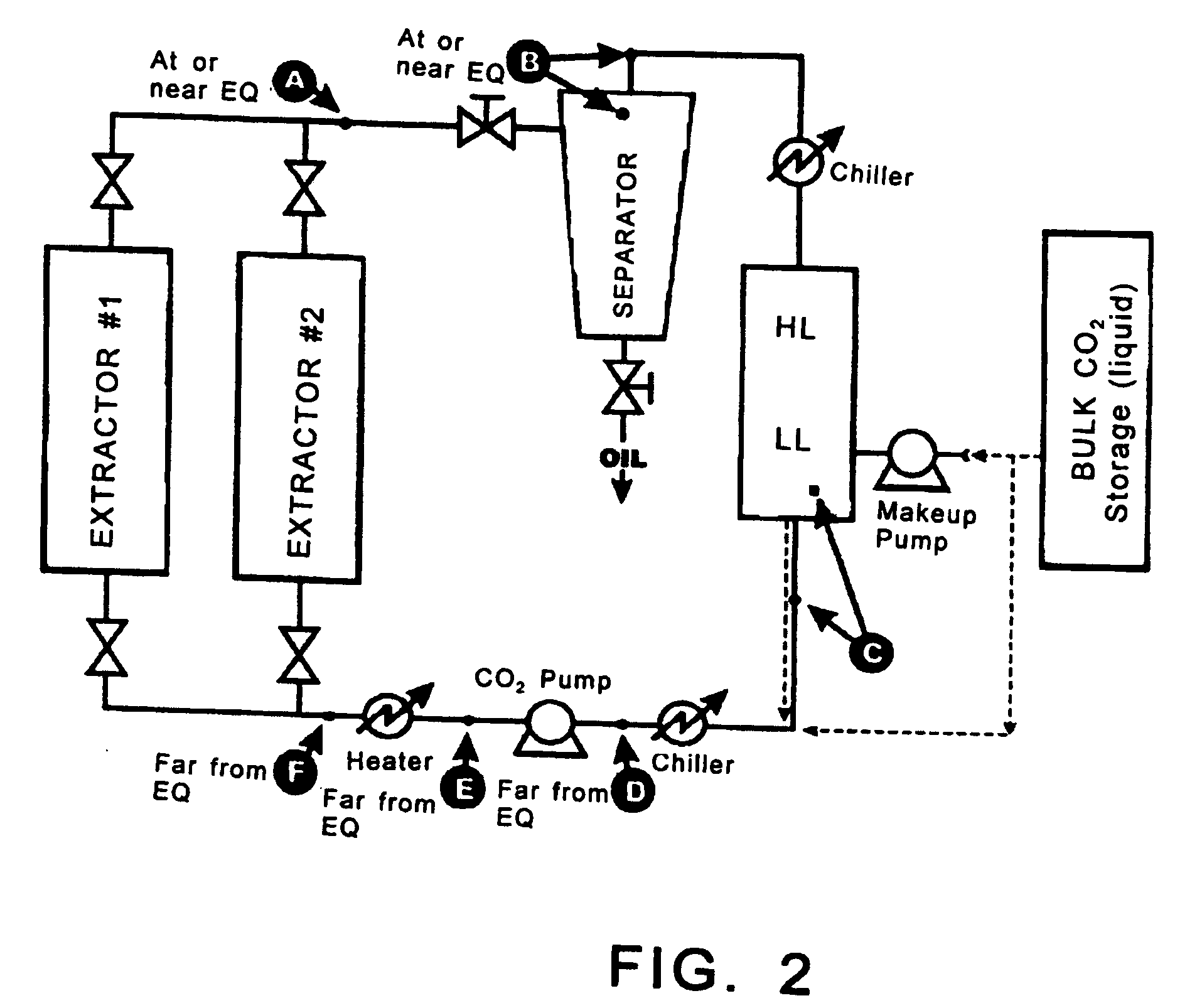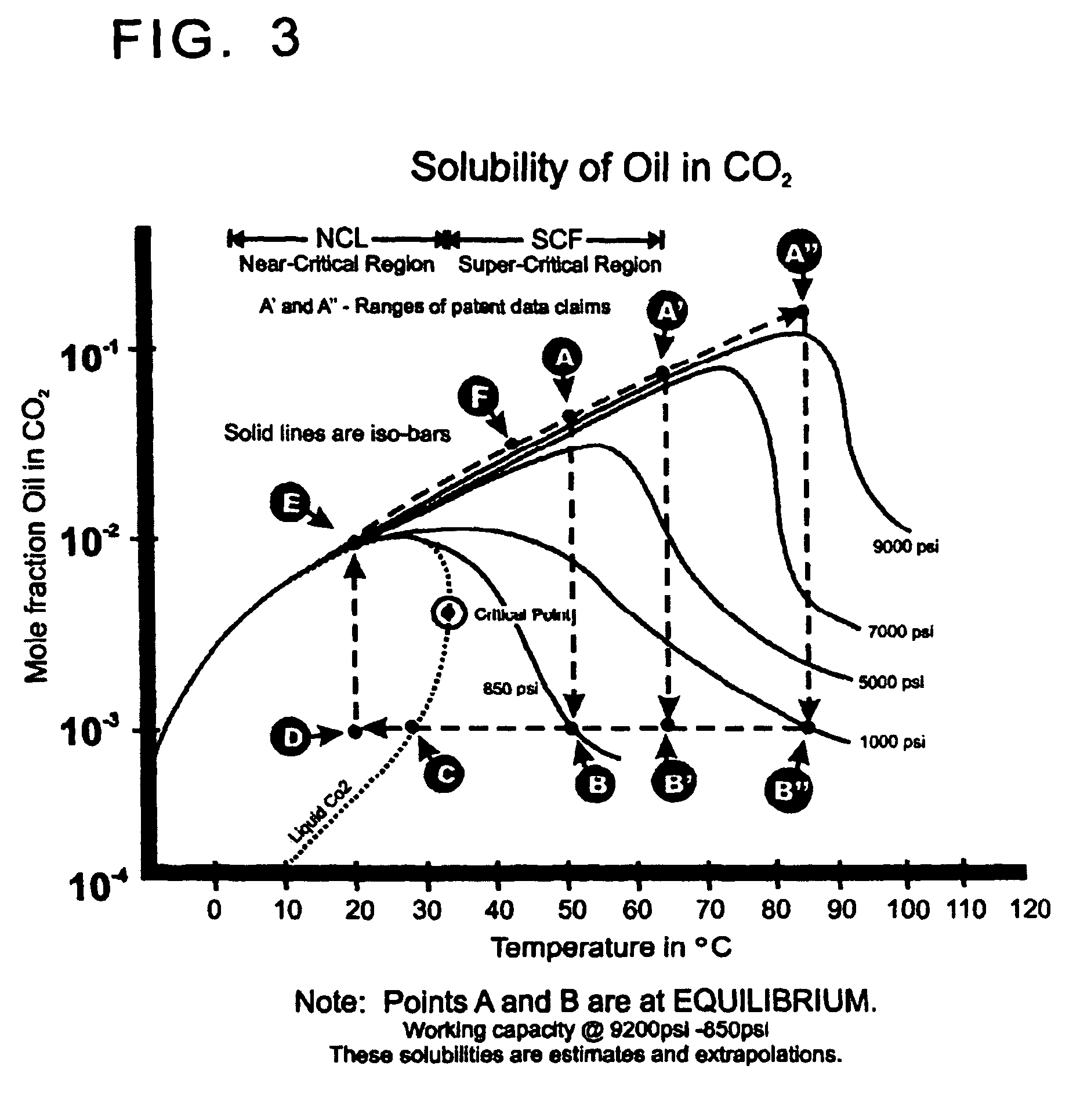Method of removing oil from a mixture of tool steel swarf granular material and oil
a technology of swarf granular material and oil, which is applied in the direction of filtration separation, cleaning using liquids, separation processes, etc., can solve the problems of environmental hazards and unsatisfactory production of solids products, and achieve the effect of convenient and safe operation
- Summary
- Abstract
- Description
- Claims
- Application Information
AI Technical Summary
Benefits of technology
Problems solved by technology
Method used
Image
Examples
Embodiment Construction
[0040]The swarf, as analyzed in Tables A and B, was sent to Supercritical Solutions LLC, 2845 Rolling Green Place, Macungie, Pa., 28062, to remove oil from the mixture of granular material and oil, and Table 1 shows the resulting data. In at least one possible embodiment of the present application, a small sample of high speed steel swarf was loaded into a process development unit (PDU), brought to temperature, either by direct and / or indirect heat transfer, to 24° C., and pressurized to 1700 PSI. The sample was extracted by passing pure subcritical carbon dioxide through the bed, continuously, over a two-hour (120 min) period. The sample of initial high speed steel swarf feed contained approximately 12.4%, (by weight) contaminant oil. It should be noted that other samples of swarf could contain levels of contaminant oil other than 12.4%.
[0041]Samples of treated swarf were taken and analyzed intermittently over the duration of the experiment. The effluent carbon dioxide from the bed...
PUM
| Property | Measurement | Unit |
|---|---|---|
| temperature | aaaaa | aaaaa |
| temperature | aaaaa | aaaaa |
| temperature | aaaaa | aaaaa |
Abstract
Description
Claims
Application Information
 Login to View More
Login to View More - R&D Engineer
- R&D Manager
- IP Professional
- Industry Leading Data Capabilities
- Powerful AI technology
- Patent DNA Extraction
Browse by: Latest US Patents, China's latest patents, Technical Efficacy Thesaurus, Application Domain, Technology Topic, Popular Technical Reports.
© 2024 PatSnap. All rights reserved.Legal|Privacy policy|Modern Slavery Act Transparency Statement|Sitemap|About US| Contact US: help@patsnap.com










